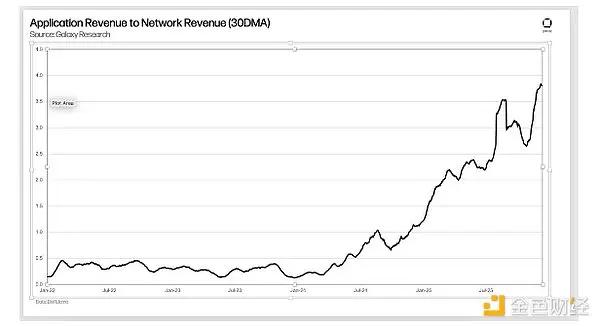Author: Spirit, Jinse Finance
The reciprocal tariff policy that the Trump administration plans to announce on April 2 is like a sword of Damocles hanging over the market, triggering potential turbulence in the global trade pattern. Although market sentiment has eased recently due to signals that the policy may be "moderate", its impact on the crypto market and traditional financial market should still be paid attention to.
1. Tariff data analysis: coverage and potential tax rates
The Office of the United States Trade Representative (USTR) has sought comments from 19 trading partners, which account for 91% of US imports, of which 15 have a trade surplus with the US, accounting for 87%. This means that even if only "a few countries" will be subject to tariffs, as White House officials have said, the impact could be very wide-ranging.
To understand the potential impact of tariffs, we need to review the current tariff structure of the United States and the previous tariff actions of the Trump administration. According to the World Bank, the overall trade-weighted average tariff rate of the United States is relatively low, but in specific industries, such as steel and aluminum, the Trump administration has implemented significant tariff measures. The concept of " reciprocal tariffs " proposed this time means that the United States will take action against countries or regions that have different tariff levels from its own.
Goldman Sachs’ analysis provides us with a framework for understanding potential tax rates:
Tariff differentials: The tariff differential between the United States and its trading partners is approximately 1.3%. This is relatively easy to quantify and can be used directly as the basis for reciprocal tariffs.
Non-tariff barriers: This is the most influential potential factor, and Goldman Sachs estimates that its combined impact is about 6%. Different countries and regions have huge differences in non-tariff barriers in terms of technical standards, export subsidies, etc. How to accurately quantify and convert them into tariffs is a key challenge. For example, the EU may have higher non-tariff barriers in agricultural products, while China may have more disputes over industrial subsidies.
Undervalued exchange rate: A stronger dollar makes the currencies of many trading partners relatively undervalued, which reduces the cost of U.S. imports. The Trump administration may try to factor exchange rates into tariff calculations, but this is controversial in the world of international trade and difficult to measure accurately.
Tax policy: The Trump administration may take factors such as digital service tax (DST) and value-added tax (VAT) into consideration. Many countries tax digital services, while the United States relies mainly on sales tax, which is seen by some as unfair competition. In addition, the VAT system of some countries may also be seen by the United States as an indirect export subsidy.
Combined with Goldman Sachs' analysis, if factors such as non-tariff barriers, exchange rates and tax policies are taken into account, the actual tariff increase may far exceed the simple tariff difference. Goldman Sachs' baseline forecast is that the actual US tariff rate will increase by 10%, and may even reach 15% in the risk scenario. Considering that the current average US tariff is about 3%, this means that the potential additional tariff burden will be very significant.
two, Predictions and differences among mainstream media, institutions and traders
Mainstream financial media have generally paid close attention to the Trump administration's tariff moves and have reported extensively on their potential impacts.
Bloomberg and The Wall Street Journal previously reported that the Trump administration may adopt a "targeted strategy," suggesting that the number of countries on which tariffs will actually be imposed may be limited. This news was interpreted as positive by the market, driving a rebound in U.S. stocks.
Goldman Sachs warned in its report that the initial tariff announcement could have a negative impact on the market because the initial tariff rate could be high, used as a bargaining chip, and could far exceed market expectations. Its baseline forecast assumes that actual tariffs will rise by 10%, and the risk scenario is 15%.
Morgan Stanley believes that despite the risk of tariffs, oversold momentum indicators, seasonal factors and fund flows will support the rebound of U.S. stocks, and the S&P 500 index has room to rebound around 5,500 points. This shows that its view on the short-term market is relatively optimistic.
UBS is cautious, believing that indicators such as employment expectations, spending outlook and consumer confidence indicate that corporate profit expectations will be frustrated, and the S&P 500 index may fall another 8% to 5,300 points. Ulrike Hoffmann-Burchardi , chief investment officer of UBS Global Wealth Management, also warned that the stock market will see further volatility in April .
Barclays analysis shows that the market's implied volatility for April 2 is even lower than the non-farm payrolls data released on April 4, suggesting that traders may be less concerned about tariff policy than expected. This may reflect the market's expectation that the Trump administration may adopt a more moderate strategy.
Traders' reactions seem to be at odds with the views of institutional analysts. Judging from the implied volatility curve of S&P 500 index options, market participants are relatively less concerned about the key node on April 2. This may be due to the expectation that the White House will take a more flexible attitude on tariffs, as well as the previous experience of "announced first and withdrawn a few days later".
three, Short-term forecast: Tariff impact – open high and close low
Based on the above analysis, we can predict the market trend in the short term:
There may be a "tariff policy shock" on April 2. Although the market is relatively calm at present, Goldman Sachs' warning is still worth paying attention to. Once the Trump administration announces specific tariff measures, especially if the tariff rate is higher than market expectations, it may trigger sharp market fluctuations and cause stock markets to fall. This shock may come from concerns about intensified global trade frictions and negative impacts on corporate earnings prospects.
However, the impact of the shock may not last long. There are several reasons for this:
Dynamic adjustment of policies: The trade policies of the Trump administration are often uncertain and may be adjusted at any time. The previous tariff operations on Canada and Mexico have confirmed this. The market may expect that the tariff measures may also be adjusted or withdrawn in subsequent negotiations.
Nature of “bargaining chip”: Government officials have made it clear that the tax rates to be announced will be used as bargaining chips, and higher rates may be proposed initially. The market has anticipated this, so the actual tax rates implemented may be lower than the initially announced levels.
Short covering and fundamental factors: The recent rebound in US stocks is partly due to short covering and easing market concerns about inflation. These factors may still support the market in the short term.
Consumer confidence and recession risk: It is worth noting that the US consumer confidence index fell sharply in March, indicating an increased possibility of recession. This factor may become a key factor affecting the long-term market trend after the tariff impact subsides.
Uncertainties to note:
Specific tariff rates and coverage: This is the most critical factor affecting market reaction and remains unclear.
The Trump administration’s ultimate intentions: Whether signals of moderate policy will lead to more restrained actual action remains to be seen.
Response from the international community: Whether other countries will take retaliatory tariff measures and how severe the retaliation will be will directly affect global trade and economic growth.
summary
The Trump administration's upcoming reciprocal tariff policy is undoubtedly an important event that will affect the market in the short term. Although the market is relatively calm at present, there may still be a "tariff policy shock" on April 2. However, given the flexibility of the policy, the nature of the bargaining chips, and other fundamental factors, the impact of this shock may be relatively short-lived. Investors should pay close attention to the progress of the policy and be alert to possible market fluctuations. At the same time, it is also necessary to pay attention to longer-term economic fundamentals, such as consumer confidence and potential recession risks, which will ultimately determine the long-term direction of the market.







